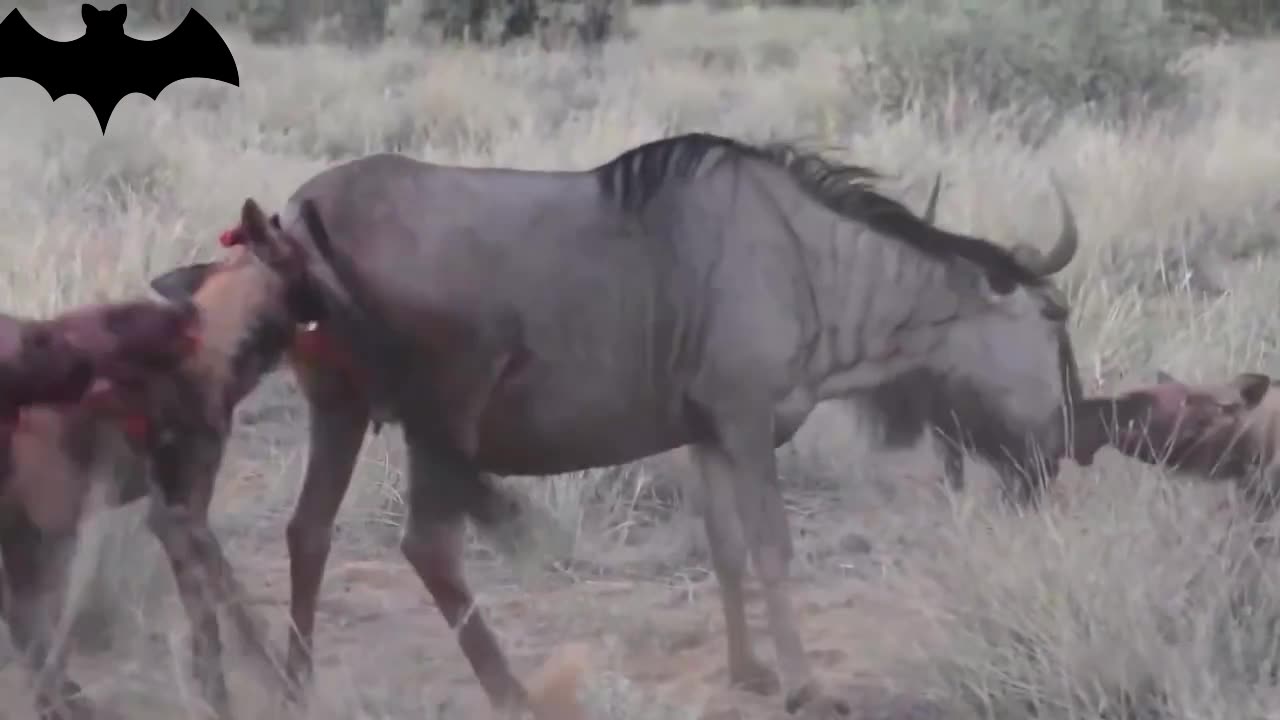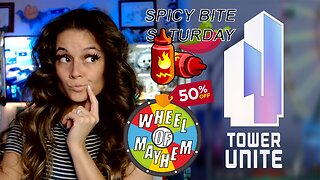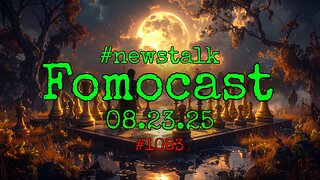Premium Only Content

How wild dogs hunt and feed in groups
Wild dogs, also known as African wild dogs or painted wolves, are highly social animals that hunt and feed in groups called packs. These packs can consist of up to 30 individuals, although the average size is around 10 to 15 members. Their hunting and feeding behaviors are fascinating and highly coordinated, showcasing their remarkable teamwork and cooperative nature.
When it comes to hunting, wild dogs rely on their exceptional stamina and teamwork to take down prey much larger than themselves. Here's how they typically hunt and feed in groups:
Pack Coordination: Wild dogs are known for their coordinated hunting strategies. They work together to locate, chase, and bring down prey, often communicating through vocalizations and body language to coordinate their movements.
Target Selection: Before initiating a hunt, the pack may spend time observing and assessing potential prey. They often target medium-sized ungulates such as antelope, wildebeest, and impala, but they can also take down larger prey like zebras and even young buffalo.
Chase and Takedown: Once a target is selected, the pack springs into action. They use their remarkable speed, agility, and endurance to chase down the prey. Wild dogs are known for their endurance running, capable of maintaining a fast pace for extended periods, which exhausts their prey.
Cooperative Hunting: During the chase, wild dogs display impressive teamwork. They take turns leading the pursuit, allowing tired members to fall back and recover their energy. This rotation ensures that the pack maintains pressure on the prey until it weakens or slows down.
Bringing Down Prey: When the prey is exhausted, the pack closes in for the takedown. They use their sharp teeth and powerful jaws to quickly immobilize the prey, focusing on vulnerable areas like the throat and abdomen. The coordinated attack ensures a swift and efficient kill.
Feeding Dynamics: Once the prey is down, wild dogs waste no time in feeding. They consume their kill quickly and efficiently, tearing into the carcass with precision. Unlike some predators that may gorge themselves and then rest, wild dogs often regurgitate food for pups, older pack members, and those who didn't actively participate in the hunt.
Social Hierarchy: Within the pack, there is a social hierarchy that determines access to food. Dominant individuals usually get priority, followed by other pack members based on their rank. However, wild dogs also exhibit a remarkable level of cooperation, with individuals often sharing food with others, especially pups and nursing mothers.
Overall, wild dogs' hunting and feeding behaviors exemplify their strong social bonds and cooperative nature, making them one of the most successful predators in the African savannah.
-
 LIVE
LIVE
BlackDiamondGunsandGear
1 hour agoAre ALL Striker Fired Pistols UNSAFE? // After Hours Armory
510 watching -
 LIVE
LIVE
SpartakusLIVE
5 hours ago#1 Saturday Spartoons on RUMBLE PREMIUM
5,350 watching -
 DVR
DVR
Man in America
6 hours ago“Summoning the Demon” — The AI Agenda Is FAR WORSE Than We Know w/ Kay Rubacek
8.02K9 -
 LIVE
LIVE
Tundra Tactical
4 hours ago🎯💥 The World’s Okayest Gun Show 🔫😂 | LIVE Tonight on Rumble!
203 watching -
 3:36:03
3:36:03
Mally_Mouse
23 hours ago🌶️ 🥵Spicy BITE Saturday!! 🥵🌶️- Let's Play: Tower Unite!
22.5K1 -
 58:59
58:59
MattMorseTV
4 hours ago $0.76 earned🔴Trump just BROKE Newsom.🔴
42.3K40 -
 18:14
18:14
Her Patriot Voice
4 hours agoWho Is WORSE for NYC: Trump Girl or Socialist?
15.7K23 -

SavageJayGatsby
4 hours agoSpicy Saturday with Mally! | Road to 100 | $300 Weekly Goal for Spicy Bites!
24.6K -
 LIVE
LIVE
FomoTV
6 hours ago🚨 Swamp Theater: FBI Raids Bolton 🕵 Still NO Epstein Files, Trump's Troops & the Red Heifer Hoax 🐂 | Fomocast 08.23.25
80 watching -
 6:04:40
6:04:40
Akademiks
9 hours agoRoc Nation & Meg Thee Stallion did a 7 HOUR Deposition with me. Drake Secret Kid Finally Revealed.
45.1K1